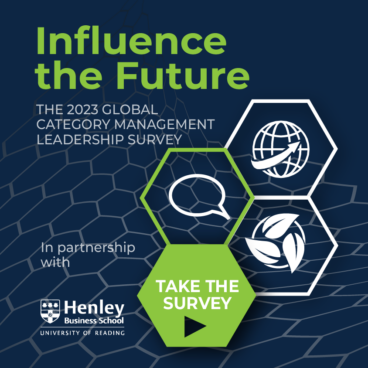
Case study • NHS
Category Management: The golden thread running through NHS spend collaboration
By Future Purchasing |


Jacqui Rock
Chief Commercial Officer at NHS England
Our global category management study recurringly identifies a cross-functional approach to managing similar areas of spend as a catalyst for raising opportunities for business value and consolidation, and, increasingly, collaboration. This outcome is unquestionably evident within NHS England.
Jacqui Rock, Chief Commercial Officer at NHS England has been directing a collaborative approach to public spend since she introduced the NHS Central Commercial Function (CCF) in 2022, and the outcomes to date touch all parts of the NHS.
Building collaboration and consolidating spend is a mammoth task for NHS England given the size and complexity of the NHS’s federated business model. The scale of its commercial activity is huge, with 228 acute trusts, formed into 42 integrated care systems, multiple arm’s length bodies, social care, and so on. Healthcare is the largest area of government procurement spending, and is larger than any other area including Defence, amounting to some £30 billion to £40 billion a year. With 4000 people buying products and services from more than 80,000 suppliers, overseeing procurement best practice is a huge task.
“The NHS is a vast and complex business,” says Jacqui. “The procurement process at NHS England is set up to encourage competition and market innovation, while clearly focusing on improving health outcomes. But obviously, with that size of spend comes a responsibility not just to deliver efficiency savings, but to make sure the NHS uses resources effectively to maximise value for money for the taxpayer. And all of that must support patient outcomes. That’s what makes NHS procurement unique.”
And it calls for a particular formation of teamwork and skill.
Category management is structured to deliver across the organisation
Category management is very much part of a wider, more holistic transformation programme within the NHS rather than being viewed through a single lens.
“This is deliberate,” says Jacqui, “we see everything we do within buying at the NHS ultimately impacting and delivering effective category management. This is important, because to succeed in transforming to an efficient and effective function, you need to look at the entire procurement process and you need to look at delivery. From that perspective comes world-class expertise in category management.”
With 4,000 people buying in a very federated model, The Central Commercial Function, run out of NHS England, brings them all together. It has a number of key service-operated offerings: Commercial Best Practice, Technology and Data, Architecture, Strategy, Governance, Assurance and Process, People and Community, Commercial Strategies, Sustainability and Innovation, Sourcing, Supplier, Category and Contract Management, with a category management approach common throughout.
The recently published Strategic Framework for NHS Commercial covers commercial ambitions and objectives for the next five years. Looking realistically at the NHS and the health spend, it marks a real step change in the way NHS Commercial is moving forward. The vision of that Strategic Framework is to be globally renowned as a commercial function in healthcare, supporting the NHS to deliver world-class patient care and outcomes.
“It’s about driving collaboration across commercial teams so that together we can deliver on NHS priorities, on what we’ve committed to as a profession, while keeping the patient at the heart of everything we do, on leveraging the NHS collective buying power to ensure the best value for money and on providing clear, consistent guidance on how suppliers contract with the NHS. Through this model we’ll raise overall productivity and efficiency above the historical average, and seek delivery on commitments outlined in the NHS long-term plan.”
This strategic framework will be used as a centrally-driven blueprint for supply chain transformation around four key themes:
People: Attracting the best and most diverse commercial talents and connecting commercial professionals to one another.
Digital: Using data as a strategic asset and using its insights to create the greatest value and public trust through greater transparency.
How we work: Simplifying and speeding up the procurement process, removing the unnecessary red tape and bureaucracy and embedding commercial standards and best practice into day-to-day working. Leveraging buying power at scale to strengthen relationships with the supply chain for better patient outcomes.
Influence and scale: Leveraging influence and scale to foster healthy supply markets, develop and shape the market, unlock benefits from innovation, and deliver wider social value and economic benefits through procurement.
“And effective category management is the golden thread that runs throughout the entire strategic framework,” she explains.
The central resources are connected to leverage categories in different ways. Expanding that to local deployment is all about implementation.
Top capabilities for implementation
“Our teams consist of brilliant commercial people with category expertise. The categories we tackle are wide, anything from drugs and clinical consumables through to transport and estates, the list is long as there is almost nothing the NHS doesn’t buy. So we are launching playbooks, offering training and putting the right governance in place for effective category management. And we’re identifying where the particular category skills lie within our in our commercial teams.”
In terms of category management, top capabilities include data and supply market analysis, and influencing and trust-building skills. “What’s really fabulous about our industry is the breadth of skillsets we have, as negotiator, salesperson, influencer or other — as well as knowing the law and understanding process.”
The Strategic Framework brings together the whole commercial community and all those skillsets and gives them a seat and voice at the table. The interventions contained within will be delivered across the NHS by areas that have exemplary skills in buying certain categories.
“In this way, we share our skills and experience and maybe even buy on each other’s behalf,” she explains. “This is important as we consider how we are going to deliver category management and category interventions. We look at where the best practice is and make sure they have a seat at the table with us, like Crown Commercial Service, which delivers common goods and services across the NHS, and NHS Supply Chain, which delivers medical devices and consumables as a centralised core function.
“The strategy isn’t about creating centralised, nationalised buying, it’s about collaboration and finding the most effective and most innovative ways to buy through a commercial procurement community.”

Innovations that complement category management
Other innovations complement the framework initiatives and show how category management is seen within the context of a variety of commercial activities, rather than a standalone operation.
Part of the commercial efficiency initiatives include the Framework Accreditation programme. When reviewing the buying frameworks used by the NHS, Jacqui uncovered more than 1,200 frameworks with variations in product cost and quality. This made it difficult for the NHS to decipher which frameworks offered the best value for money, was a poor use of time and resource for the commercial teams, and left suppliers unsure about which framework they should be on.
Being passionate about innovation, especially within the SME marketplace, she wanted to simplify how their frameworks run across the NHS to make it easier for smaller firms. “While it can be easy for the big strategic players to be on multiple frameworks, that’s not the case for SMEs,” she says.
The ambition of a Framework Accreditation program would reduce those inefficiencies and enable the NHS to further leverage scale and national pricing. “We spent a lot of time looking at the data to identify framework hosts,” she explained. “NHS commercial teams will now buy only from accredited framework hosts. This removes duplication and makes the landscape more level to navigate, leading to better value. We will then look at those frameworks by category, develop a framework category taxonomy and generate the standards needed to undertake that category-level framework. The estimated savings, as a result of having better standardised frameworks is projected at £100 million over the project period.
“The point is,” she says, “you can make significant savings just by getting a grip on the categories in your frameworks.”
But, as with all initiatives, you have to get buy-in …
It’s all about data
Jacqui explains: “We have been implementing an end-to-end procurement solution across all commercial teams. For the first time in NHS history, we have a full view of what we spend, where we spend it and with whom. Now, this is really exciting, because as a result of that data I’m able to look at variations in cost and in what’s being delivered by the same supplier. Our size means we have suppliers that might have hundreds of different contracts with each Trust or primary care provider. So we’ve been able to look at that holistically.
“When you are able to articulate that data to the CFO and stakeholder landscape, when you can explain how we spend the money, and where the inefficiencies are, and what we need to do about it, that’s how you get the buy in,” she says.
The same applies to category interventions.
One example is the work Jacqui and team carried out on stents. The quantities and types being bought varied greatly. Being able to show that data to the clinicians, and get their clinical lens on it, meant they could bake their informed perspectives into the category strategy.
All stakeholder parties that NHS Commercial interacts with, including category teams, are involved to get that wider business requirement perspective, from the multiple trade bodies of the Cabinet Office, through to the doctors and consultants themselves. “By consulting and involving everyone is how we form our category strategies for each of our products,” she says.
Engagement is also key
“When we launched the Strategic Framework, we asked the community to adopt this blueprint as their direction of travel for commercial, which is important when you’re looking at that entire stakeholder landscape. But we had to structure an engagement program, which included running regular national procurement forums. Now, each integrated care system (ICS) has a dedicated procurement lead which may have multiple Trusts under them. Getting those ICS procurement leads into a room with representatives from right across central government means we can collectively and collaboratively look at that whole stakeholder engagement. They discuss face-to-face the priorities, challenges, categories, innovations, and so on with their peers and their teams.
“So I really see it as my job to widen the stakeholder net and engagement with the NHS. This whole programme of engagement keeps NHS Commercial up the agenda, because it’s a huge volume of spend, and people should be aware of how we are managing it.”
Of course how and where money is being spent has long been a topic of interest for the business. But Jacqui has seen a shift in how it’s represented. “We are now actually talking about the NHS as a whole: how we can leverage that spend, how we can shape innovation, how we can create new markets, how we use NHS commercial power to deliver better patient outcomes and for the greater good – and category management is a key part of those ambitions.”
It all needs change management
Change management is essential for all transformation, but there needs also to be a change in the mindset of the people developing the categories, since having clinical representatives on the team is a leap forward in what and how they buy.
How they drive this change is by validating a plan, then delivering these nationally-led category interventions for the prioritised spend.
One example lies in the energy category.
“Price hikes have been painful for everyone,” says Jacqui, “and they hit the NHS hard. So it was logical to look into how we actually buy energy. Again, we got all stakeholders in a room and explained the position. We had over 200 energy contracts in place across the country, all under different agreements, all with varying value and purchasing strategies. When we started looking at the numbers, and the opportunities, we collectively agreed that the way that we bought energy was not efficient. This became one of our first category interventions.”
Jacqui announced the intention to transition to a centralised energy purchasing basket to find efficiencies across the NHS. NHS England worked with Crown Commercial Service to shape an energy purchasing agreement, with everyone’s buy-in, specifically for the NHS.
“The savings on this initiative are going to be between £60 million and £100 million a year, she explained. Benefits also include, greater price stability, resilience to external events, increased budget, predictability, bulk discounts based on the consumption, volume, etc. It’s a significant amount of money saved just by bringing everyone together, simplifying the process and buying through the consolidated initiative. It’s a real example of how we can use NHS purchasing power.”
Looking forward
Arriving at standardisation across a very siloed operation is always going to be a challenge. But with a robust engagement program that encapsulates all key stakeholders, best practice and reducing the barrier of size and scale, the team is succeeding, and Jacqui puts a lot of it down to data.
“Ultimately it’s about telling the story and delivering the message that we’re better together. Data has helped us do that, but you have to ensure you have the right access to data and know what to do with it,” she says. “When we work as one NHS with a category approach, we will realise savings efficiencies, we will open the door to creating dynamic markets and leverage every spend in existing markets. And this is really exciting in a very exciting year for public procurement.”
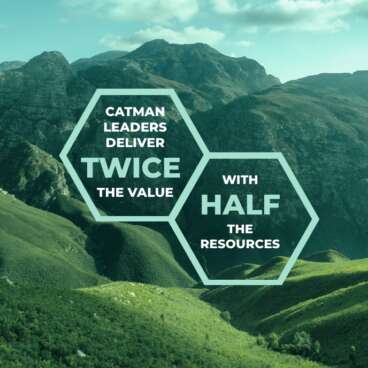
This case study is taken from
“Influence the Future” – The 2024 Global Category Management Report
Equip yourself with the knowledge and tools needed for tomorrow’s challenges.
- Strategic Focus: Gain insights into top practices that drive improvements.
- Value Delivery: See how leaders maximise value beyond expectations.
- Team Efficiency: Deliver twice the value, with half the resources.
- Industry Benchmarking: Assess how you measure up to industry standards.
- Expert Knowledge: Extract actionable advice from leading global case studies.
Related Expertise
Supplier management
Our supplier management approach combines excellent tools and techniques across the full range of activity, from segmentation, through performance measurement and improvement and through to relationship strategy development.
Category management
Excellence in Category Management gives multipliers of value delivery compared to less effective programs. Our approach, delivers a high performing team and process which provides sustainable value over years rather than months.
negotiating for procurement
Our approach to procurement negotiation helps teams to improve performance, track their progress, measure success and secure rapid payback to programme costs. It is based on four principles…
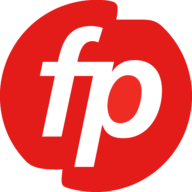
Future Purchasing
If you want to get more value out of your procurement spend, or you just want to know more about us, request a callback above or send us an email and we will come straight back to you.
Further Reading

Blog
Learning and Development – Evaluating Training Course Effectiveness
By Mark Hubbard |
Evaluating a procurement training course goes a lot further than it sounds. In the world of learning and development, evaluating course effectiveness is an essential way to see how well training is being delivered. However, few people comprehend the depth to which this should go, and the implications of this depth for truly effective training outcomes.
Achieving Practical Outcomes Through Training
- Objective Setting: It helps to think about what we’re trying to achieve, particularly in work skills focused training, such as Category Management.
- Beyond Theoretical Understanding: It’s not enough to understand some of the theory behind the subject. We need to get participants to the place where they are effectively applying the learning in such a way that they are delivering measurable improved results consequently.
The Importance of Measuring Outcomes
This has some pretty significant implications, not least that we need to be able to measure outcomes (by which we mean business outcomes) at some time after the delivery of the training and seek indicators of increased effectiveness.
Challenges in Procurement Training
In a procurement environment, we often have a range of measures in place, although they are usually too focused on simple price down measures. This is a good place to start, but it also implies that should be working out the measures to use within an annual round of objective setting within the overall design of a change program – we want the measures to be set up both to achieve the right procurement outcomes, but also link via personal objectives into training.
Learning and Development’s Role in Training Success
- Clear Expectations: This also implies that the participants in the training need to have a very clear understanding that they are expected to use the training outcomes to deliver results.
- Necessity of Management Review: Management review and guidance is necessary to make sure that is happening. There is nothing worse than setting up a measurement approach and then not giving people the time and support to make sure that they are able to deliver the required outcomes.

Designing Effective Learning and Development Activities
This further implies that the training needs to be set up in a way to deliver sufficient understanding of the activities to be adopted that people can use them in their daily lives. The design of the learning and development activities needs to focus on both the theoretical background of the tools encountered, but also the real-world application, suggesting a lot of breakouts to explore use.
Supporting Teams Post-Training
For line managers, this suggests that they need to be ready to support their teams in both the use of the tools learned, and test and challenge them to expand that usage.
Systemic Approach to Training
This speaks to a systemic approach to delivering the required outcome, which is improved performance. The evaluation of the training does need to bridge all these areas to ensure that the right elements are in place.
Addressing Procurement Training Design and Participant Alignment
There are other areas to consider here as well. One often observed challenge in training is that the individuals who are receiving the training have only a slight connection to the reason for the training, often because of poor course descriptors or participant selection processes. When the training is designed for a specific set of outcomes, and the outcomes are linked to individuals’ job roles, then there is an up-front requirement to make sure that the people attending are suitable for the course that is being delivered.
It is better to adjust the course to suit actual needs than it is to deliver an unsuitable course for particular people. This tight alignment provides excellent results when it is correct, but poor outcomes when there is a mismatch.
Pre-Course Briefing Importance
Much of this points to the need for carefully considered briefing before a course happens. We need to ensure that the attendees are given the correct information to ensure that they can prepare properly, and to make sure they bring the right mindset, linked to their desire to deliver excellent outcomes.
Conclusion: Evaluating and Improving Procurement Training Courses
So, we started with the concept of how we can evaluate training courses, but this has led to a review of a wide range of interlinked elements, all of which combine to deliver the best possible outcome. When commissioning training, we need to be very clear about the outcomes we are trying to achieve, to make sure we are clearly building in that direction.
Exploring the Kirkpatrick Evaluation Model for Effective Procurement Training Assessment
This brings us to the Kirkpatrick Evaluation Model which offers a comprehensive framework for this purpose. It consists of four separate elements of evaluation:
1
Immediate Feedback:
Gauging Participant Reactions
- Conduct an engaging, interactive survey immediately post-training to capture participants’ emotions and thoughts.
2
Retention of Knowledge: Ensuring Lasting Learning and Development
- Schedule a follow-up quiz or interactive assessment two weeks post-training.
3
Behavioural Changes:
Observing Application of Training
- Develop a ‘Behavioural Change Toolkit’ for managers, equipped with observation checklists and conversation guides to help them monitor and discuss the application of new skills within their teams.
4
Measurable Results:
Tracking the Impact on Performance
- Identify key performance indicators (KPIs) aligned with the training objectives. Celebrate and communicate any positive trends to motivate continuous improvement.
This comprehensive evaluation takes us back to the top of this article: if we want to truly have change and improvement delivered from training, we need to set it up right.
Contact Us
We’re passionate about how a well-integrated approach to learning and development can profoundly impact your company’s procurement strategies and overall business outcomes. For more insights or to discuss how we can help you design impactful training programs, contact us today!

About Mark Hubbard
Director
30+ years experience in procurement and supplier management, in line and consulting roles
Previous employment: Positive Purchasing Ltd, SITA,
QP Group, BMW, SWWS, Rover
Education: BSc in Engineering Metallurgy, MBA University of Plymouth
CIPS: Member
Further Reading

Case study
Category Management enabled procurement transformation for Pharmaceutical Sector
By Future Purchasing |
Business situation
Facing challenges such as a dwindling product pipeline and escalating costs, a leading global pharmaceutical company with a focus on neuroscience brain disorders recognised the need for a radical transformation in its procurement operations. The absence of a uniform sourcing process and the limited involvement and control of the procurement team across various spend areas had relegated them to mere “order raisers” or contract administrators, rather than strategic partners in the organisation.
In response, the company appointed a visionary new Chief Procurement Officer (CPO) tasked with a clear mission to elevate Procurement from a transactional function to a strategic pillar within the company. This ambitious transformation was to be fuelled by the initiation of a ‘quick-wins’ savings program, aiming not only to generate immediate financial benefits but also to lay the groundwork for long-term operational excellence..
Solution implemented
In collaboration with the newly appointed CPO, Future Purchasing embarked on crafting a comprehensive procurement strategy aimed at revolutionising the company’s approach to procurement. The strategy set ambitious objectives, including expanding the scope of spend to be covered by category strategies, achieving annual savings targets of over 10%, and significantly enhancing the skill set of the procurement team to meet these challenges head-on. To kickstart this transformation, a detailed 100-day plan was developed that redefined procurement’s role within the organisation as a strategic and value-driven function.
1. Quick wins savings programme
A quick-wins savings programme was set up to generate funds to invest in the procurement transformation journey. A joint Future Purchasing/customer team was set up to identify a pipeline of potential cost opportunities with a 12% cost down target to be completed in 8 weeks. The scope was limited to targeted supplier negotiations and there were four steps:
Step 1
Select suppliers:
Using spend data by supplier, the top 20 suppliers in each major category area were identified. An opportunity analysis was carried out using a quick win framework to analyse the supplier contracts and a prioritised list of suppliers was created.
Step 2
Train the team to prepare supplier negotiation plans:
Future Purchasing ran a negotiation planning workshop to prepare the team for focused supplier negotiations. Each category manager was coached to prepare a negotiation plan for each supplier negotiation which was then road tested by role playing to examine the quality of those negotiation strategies.
Step 3
Conduct the supplier negotiation:
Each supplier negotiation was set up over a three-week period to ensure they could be completed by the year end. Some negotiations were held over a number of sessions to review revised proposals. Savings were calculated on an annualised basis with contracts due to be committed by year end
Step 4
Manage programme delivery:
All supplier negotiations were documented in a centralised benefit tracking spreadsheet with progress reviewed weekly with all CMs presenting their negotiation status. This visibility of delivery drove a competitive spirit amongst the team to achieve their target savings. All savings were validated and signed off by Finance against specific criteria with all eligible savings to be deducted from budgets. Average of 12% savings was delivered from the supplier negotiations. 20% was achieved in lab consumables, software, airfares and hotel rates. The self-confidence and profile of the Procurement team was significantly enhanced and stakeholder feedback was very positive with increased level of demand for Procurement involvement in other projects.
2. New category management process & toolkit designed.
Programme design
Programme plan created with agreed deliverables around the new category management process. Procurement Leadership Team (PLT) diagnostic questionnaire issued to establish current views on how best to implement category management. Results shared with the PLT to facilitate successful implementation.
Process design
A client design team was set up with Future Purchasing to co-develop a new “fit-for-purpose” category management process focused on value levers, strategy creation and a sensible modulation of activity as a “one size fit all” approach would not work. Focus was on selecting which tools and templates to use for different size and complexity of project. Final approved process & toolkit were made available to the category teams.
3. Category management training and coaching.
Education & training
Future Purchasing designed a customised workshop training plan with a balance between soft and hard skills training. The category management training workshops were interactively run for approximately 40 people with an outstanding feedback rating of 97%.
Coaching support
Coaching support: Category management coaching was provided for individual sub-category projects where each session was 1.5 hours every 2 weeks. CM coaching clinics were also set up for small groups of 3-4 focusing on specific tools e.g. business requirements, negotiation, creativity & options generation. This created a learning environment for category managers to discuss and share their experiences and improve their understanding of how to make the process work better.
Category Management training and coaching process
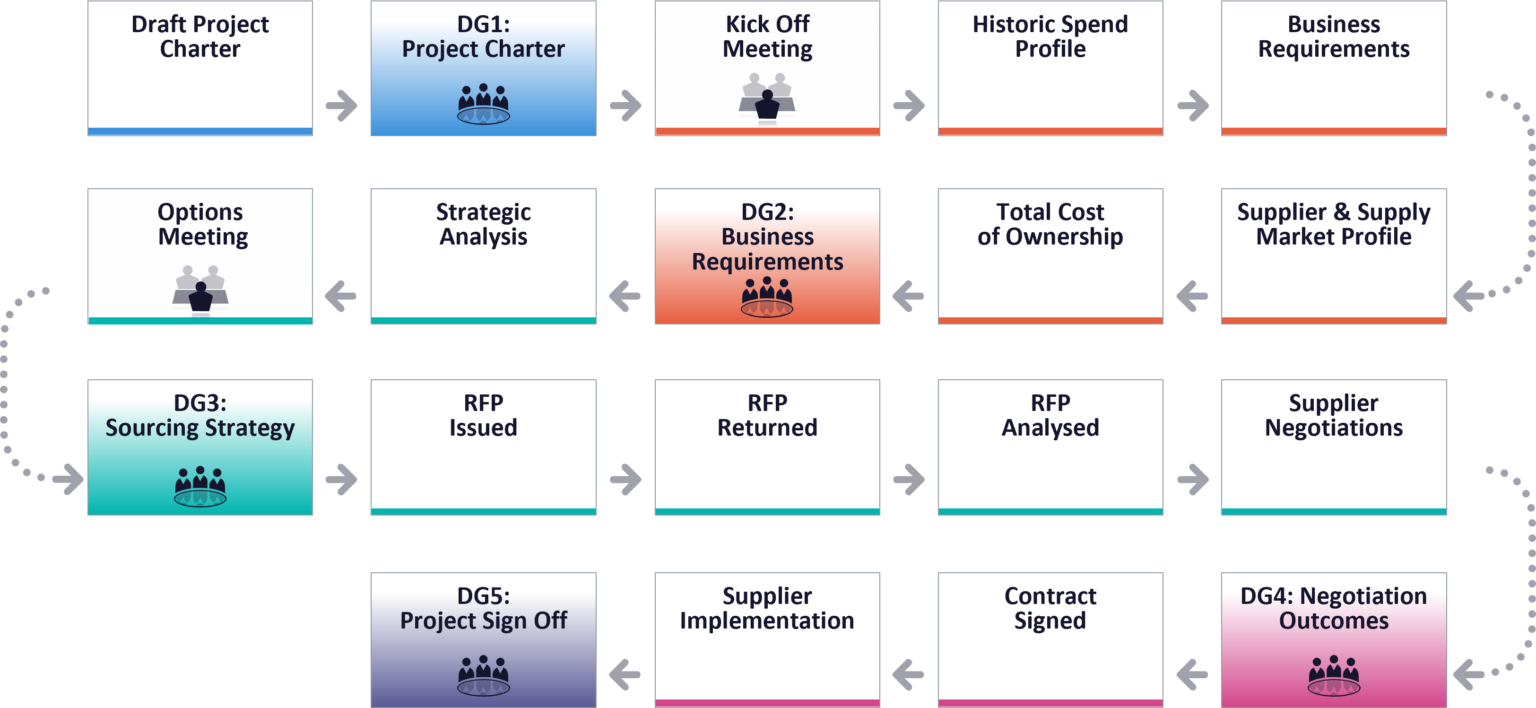
Transformation Outcomes
The transformative category management program spearheaded by the new CPO and Future Purchasing culminated in delivering remarkable savings of 11% reduction over a 12-month period. This initiative not only introduced category management as a fundamental practice within the business but also profoundly embedded it into the organisational ethos. As a direct result, the procurement team underwent significant upskilling in category management, which in turn fostered enhanced relationships with stakeholders across the business. Procurement transformed itself from a functional necessity to a strategic partner, now perceived as a positive force for change and innovation within the company.
Significant category savings projects included:
41%
savings on telecoms category via a competitive tendering process.
20%
savings in lab consumables by 50% reduction in suppliers with a much-improved level of service provided to the end users.
19%
savings by consolidating lab service contracts through three main suppliers instead of 120 suppliers previously.
17%
cost savings by changing the Canteen provider together with improved service guarantees.
11%
cost saving in recruitment services with improved frame agreements with preferred suppliers.
Related Expertise
Supplier management
Our supplier management approach combines excellent tools and techniques across the full range of activity, from segmentation, through performance measurement and improvement and through to relationship strategy development.
Category management
Excellence in Category Management gives multipliers of value delivery compared to less effective programs. Our approach, delivers a high performing team and process which provides sustainable value over years rather than months.
negotiating for procurement
Our approach to procurement negotiation helps teams to improve performance, track their progress, measure success and secure rapid payback to programme costs. It is based on four principles…

Future Purchasing
If you want to get more value out of your procurement spend, or you just want to know more about us, request a callback above or send us an email and we will come straight back to you.
Further Reading

Case study
AstraZeneca
At AstraZeneca the foundations of category management are built on stakeholder engagement
07/11/2023
Read More

Webinar
A Meeting of Minds Webinar
18/07/2024
Watch

Case study
bp
Mark Smith interview – A lean category management model is at the heart of procurement at bp
08/02/2024
Read More

Podcast
The Future Of Category Management | Jon Hughes
In episode 5 of our 5-part podcast series on category management in procurement, Jon Hughes and Mark Webb talk about the business case and business value deliverable that comes from working with third party suppliers and the value that still remains to be unlocked.
By Mark Webb |

Jon Hughes
Profile
35 years international business experience specialising in procurement change management.
Previous employment:
General Motors, British Steel, NWRMC, Co-Founder & Chairman of ADR Purchasing Consultants, Innovation Director for QP Group.
Education:
BA (Hons) and MA in Organisational Psychology, Cambridge University.
CIPS Fellow and holder of their Swinbank Award for Procurement Innovation.
Former Visiting Fellow at Birmingham University and the Vlerick Leuven Business School.
Role in FP: Chairman
Mark Webb, Managing Director, talks to Jon Hughes
In episode 5 of our 5-part podcast series on category management in procurement, Jon Hughes and Mark Webb talk about the business case and business value deliverable that comes from working with third party suppliers and the value that still remains to be unlocked.
Transcript
00:00:00:00 – 00:00:22:05
Jon Hughes
Why not go down the sell routes? But why not be really radical and ask those people what they want? What do you want from suppliers? What do you want from procurement? I think it was just almost revolutionary stuff where you’re saying, look, until you’ve heard any senior manager communicate to you what really matters, don’t assume that you know.
00:00:22:06 – 00:00:40:14
Jon Hughes
Yeah. Unless you’ve heard them say it, so that you can then link on to it and aligned with it, don’t ever make that assumption. It was just amazing and I think the experiential piece to get procurement people, again, it’s not just creating a source plan. You can have the best analytical source plan in the world but can you present it? Can you sell it? Can you get people excited by it? Can you get people to be, you know, really, have a wow factor with it?
And again, I think when you look at the evolution of some of the best procurement functions across the planet, some of those people become very, very good indeed, almost brand ambassadors for procurement aren’t they.
They often become quite sophisticated, I’m mean the nature of the presentations, the way in which they’ve devised the procurement processes, the names that they’ve given them, the way that they’ve drawn on other concepts and ideas in the organization. It’s actually moved procurement from the transactional back office thing into something that, you know, people go, Wow, I didn’t know that was procurement. That is really exciting. It’s almost got a sexy quality to it.
That’s taken a long time because that is mindset, it’s psychology, it’s interpersonal skills, It’s behaviour, it’s presentations, it’s communication. It sounds easy, but as you and I know it’s a hell of a difficult thing to move an organization, to move a lot of people in the organization, so they’ve got those skill sets that, you know, just basically hit the button in the right way.
And it swings 180 degrees, doesn’t it, from hard analytical tools, absolutely vital into soft cluster of things which to do with engagement, massive change. And, you know, I’m sure I could still run experiential workshops where 59 minutes to go they’d still be panicking.
00:02:01:24 – 00:02:03:09
Mark Webb
I’m absolutely sure you could. Before we wrap up.
Just just thinking about the future, any any sort of thoughts about where this type of approach maybe in ten or 15 years time from now?
00:02:13:24 – 00:02:41:02
Jon Hughes
I think there’s probably three areas aren’t there, I think the massive strides being made in data, in data capture, data analysis, artificial intelligence, algorithmic work. You know, I think procurement by it’s very nature, particularly in complex, multi-locational organizations, there’s a massive amount of data there. And I don’t think the power of a data analytics has been harnessed in any shape or form.
We’ve really got to look at what’s now happening as we’re moving from an era of globalization potentially, unfortunately, into, I would say, de-globalization. But we’re taking a backward step. So understanding market trends, understanding, you know, fundamentals and supply and demand, working out where shortages are, working out all the various pressure points in pricing and supply. I think data analysis analytics to be absolutely massive.
I think a second one is clearly the whole technology space, particularly I think in terms of communication and the building of communities through technology. Again, I can only go back to 1985. We had a fax machine and that was just seen as revolutionary, we were dealing with clients in in Australia. You come in the morning, there’ll be a mile of fax paper. You know, your first job in the morning was cutting the fax paper up to find out what to come in overnight.
So I think technology as an absolute prime enabler remain an absolute massive one. And that I still think the third one remains the whole area of supplier management in its various forms. And I don’t mean tactical supplier management. I think what we used to call transformational breakthrough thinking with suppliers, I still genuinely believe that there are many, many, many barriers for organizations working properly with a supply base. I think supplier management is still one of the huge sources of value that hasn’t yet been properly tapped.
00:04:04:00 – 00:04:26:25
Mark Webb
Know, definitely. And that cross crossover between the suppliers and the particular categories. And seeing that way, those two things can work together. I think most organizations still struggle with that and they’ve got one group of people still working from a supply management perspective, not as closely bolted in as they could be to the category perspective and value dropping between those two groups. Really. So yeah, it’s still a massive opportunity area for sure.
00:04:30:21 – 00:04:54:05
Jon Hughes
Well, I think that’s right. It doesn’t really matter what the sector is. I mean, if we’re working in the pharmaceutical sector, we’ve seen the amazing innovations in the last 18 months with COVID vaccines and the colossal work done by third party suppliers, particularly in the university academic sector.
So we know that the supply of absolute breakthrough innovation in, let’s say, pharmaceuticals, third party supply, absolutely colossal. I think in FMC, the whole innovation piece, getting that innovation, being first to market with it, being the preferred customer for major suppliers. Again, there’s still a huge amount of work to be done there.
If you look at the public sector, we’ve got this whole piece now to do with in the UK, build back better and localization and powerhouses around the UK, the social value and social benefits of procurement. You know, that’s in the public sector, I don’t think it matters what sector you look at, it could be high margin, low margin, it could be high tech, low tech. There is a profound business case and business value deliverable that comes from working with third party suppliers in the right way. And I think for anyone who’s working in procurement category management, it’s understanding and unlocking that puzzle, that challenge.
I was doing it for 35 years. Unfortunately Mark you’re starting to move into the same type of decade, but I mean that will go on for the next ten, 10, 20, 30, 40, 50 years. I still think that there are very deep pools of value still waiting to be unlocked. I think it’s one of the reasons why management consultancies in procurement can remain very successful. There’s still a lot of value out.
00:06:04:06 – 00:06:10:21
Mark Webb
Let’s hope so, John. It’s been fantastic. Thank you very much for giving us your time and insights it has been really, really useful, thank you. 00:06:10:21 – 00:06:11:15
Jon Hughes
Pleasure.
Further listening
Podcast episode one: Re-Thinking Procurement in 2023
Podcast episode two: Re-Organising Procurement using category management
Podcast episode three: Embedding Category Management and the Future
Podcast episode four: The Challenges in Making Category Management Stick

About Mark Webb
Managing Director
30+ years procurement experience in line management
and consulting roles.
Previous employment: Price Waterhouse, Mobil Oil and QP Group
Education: BSc in Management Science and MSc in Business by Research, Aston University
CIPS: Member
Other Podcasts and Blogs

Podcast
The Challenges In Making Category Management Stick | Jon Hughes
In episode 4 of our 5-part podcast series on category management in procurement, Jon Hughes and Mark Webb talk about how some organisations have struggled to make category management stick
By Mark Webb |

Jon Hughes
Profile
35 years international business experience specialising in procurement change management.
Previous employment:
General Motors, British Steel, NWRMC, Co-Founder & Chairman of ADR Purchasing Consultants, Innovation Director for QP Group.
Education:
BA (Hons) and MA in Organisational Psychology, Cambridge University.
CIPS Fellow and holder of their Swinbank Award for Procurement Innovation.
Former Visiting Fellow at Birmingham University and the Vlerick Leuven Business School.
Role in FP: Chairman
Mark Webb, Managing Director, talks to Jon Hughes
In episode 4 of our 5-part podcast series on category management in procurement, Jon Hughes and Mark Webb talk about how some organisations have struggled to make category management stick
Transcript
00:00:00:06 – 00:00:28:03
Jon Hughes
In the early days, supplier management was completely non-existent, to be quite honest. I used to say it was like the Himalayan yeti, much talked about but never seen.
You’d see a bit of contract management, fairly rudimentary. So, wave after wave of change, was needed. Which I think is why many of the best people I’ve met in procurement, they know that their career over, say, 20 years has been through those changes.
They’ve been through those waves, and they can look back and they can see quite clearly the various staging points, moving from one phase to the next.
00:00:28:03 – 00:00:36:18
Mark Webb
Just thinking about the implementations you saw of this. I mean, obviously we’ve encountered clients that have attempted to do it four or five times and to make it stick.
Why do you think that might be? It’s reflecting back on, an organization, you know, says that doing it, have tried to implement it, but then, maybe a new CPO comes along and it’s wave after wave of attempting to take something which is perhaps more strategic sourcing or sourcing orientated into something which is more, which is genuinely more strategic, looking at the categories of expenditure where it’s appropriate. Why do you think that some have struggled to make it stick?
00:01:13:17 – 00:01:34:07
Jon Hughes
Very complex question. I mean, at one level you have to say, although it’s a hard thing to say, that quite a lot of CPOs were not up to it. There’s a shortage of talent as there is in so many disciplines. Certainly going back to eighties, nineties and the early twenties, the available pool of people who genuinely understood this, who got it, was pretty low. They got bits of it, but they definitely didn’t get all of it. So that’s point number one.
I think, again, in the early days, quite a few of the people were much stronger in procurement skills than they were in business skills and engagement and communication skills. So they were not particularly good internal ambassadors, they were not particularly good public relations experts on how to present the change journey.
So I think, you know, in the procurement community itself, there was definitely a competence issue: competence and capability. And I think that’s changed profoundly over the last 20 years. I think it’s improved a lot. There’s a lot more people who’ve come up as category managers who then become category directors, who then become became procurement directors and become CPOs.
It took a long time to build the talent pool up.
You know, I think there’s a lot of things going on now worldwide. So the things you’re doing in the whole area of virtual learning, I mean, it’s an ongoing piece. But again, you go back to the early days, you know, you ran negotiating skills course, you ran a PPCA course and that was that was it. Competence had a tick in the box. We were many miles off.
I think a second piece is clearly the whole engagement piece with stakeholders. You have got to work on a cross-functional basis. You’ve got to genuinely cross the divide because of the functions. It can’t be a battleground and unfortunately you had poor people on both sides. They just couldn’t embrace it.
You would get a lot of resistance, you know, procurement people working in a different way with manufacturing, different way with R&D, different way with marketing and so on. So I think the cross-functional piece had a lot of casualties there. Often procurement were blamed for the wrong reasons.
I think the third one then would certainly be within the general management, executive management community. You know, you’ve got to have a cadre of people who are genuinely supportive of it, but if you can’t get that, then there’s a risk that you get into what I call the sort of initiative syndrome, you know we’ll have a procurement initiative, it’ll last two years and that’s it.
Then we’ll move on to another initiative. Yes, but it’s not really embedded. It’s seen as an initiative, and I have to say quite a few CPOs, their careers were built around those initiatives. You know, they would launch an initiative for three years, then move to another organization, do another one, move to another one. So it would go on. That is not change management is it? That’s not really embedding all the things that you need.
So that getting back into the competence piece. I think if we look at the functional competencies, they’re relatively straightforward, but you’ve got those incredibly important change management competencies. You’ve got to build the change management skills of your function if you’re really going to take it forward. I mean, that’s that is basically a permanent challenge, isn’t it?
00:04:09:09 – 00:04:36:14
Mark Webb
Yeah, I think your point about securing the objectives of the business stakeholders at a senior level, when you’re talking earlier on about the KPIs as well, I think that’s, that’s the missing trigger to accelerate things that we’ve seen is, it is a functional initiative and it is an initiative. And yes, it will drive certain value, but it won’t stick around for long because the business stakeholders aren’t closely enough integrated into the thinking in this most senior level.
And I think that’s the thing that we’ve noticed over the years, is the more that we can make that connection, the more likely it is that It becomes, as you’ve said before, business initiative, not a procurement functional initiative.
00:04:47:20 – 00:05:12:07
Jon Hughes
Oh, I completely, completely agree, Mark. But I mean, it’s my university background in social psychology. So I was very interested in assessment centres and development centres and experiential learning, very early on, you know, back in the seventies.
It was always interesting to get a group of procurement people together and run experiential workshops, not lecturing, get them in and say, I was going to start workshops, you know, I’d walk in with some envelopes, put people into groups of four. I’d give them an envelope, and I’d say in an hour’s time, the chief executive of this organization is going to walk through that door and you’re going to make a presentation as to why they should take procurement seriously.
And people would panic. And I’d look at my watch and say, 59 minutes left, you better get going. And I would have a role play, someone who’d role play the chief executive.
I’m not kidding. In those early days, people would fall apart. I mean, they just couldn’t do it. And I said, okay, well, let’s go back to basic concepts. I used to explain the failings of “tell and sell”. you’d get procurement people turn up in a meeting and they would tell senior management why procurement was so important for them. They would tell them why they were going to deliver so many things that were of such value to those people.
And I’d say, well, that’s great if you got it absolutely right. But what if you’re telling them something they’re not interested in?
Further listening
Podcast episode one: Re-Thinking Procurement in 2023
Podcast episode two: Re-Organising Procurement using category management
Podcast episode three: Embedding Category Management and the Future

About Mark Webb
Managing Director
30+ years procurement experience in line management
and consulting roles.
Previous employment: Price Waterhouse, Mobil Oil and QP Group
Education: BSc in Management Science and MSc in Business by Research, Aston University
CIPS: Member
Other Podcasts and Blogs

Podcast
Embedding Category Management And The Future | Jon Hughes
In episode 3 of our 5-part podcast series on category management in procurement, Jon Hughes and Mark Webb talk about the value streams available by engaging with suppliers
By Mark Webb |

Jon Hughes
Profile
35 years international business experience specialising in procurement change management.
Previous employment:
General Motors, British Steel, NWRMC, Co-Founder & Chairman of ADR Purchasing Consultants, Innovation Director for QP Group.
Education:
BA (Hons) and MA in Organisational Psychology, Cambridge University.
CIPS Fellow and holder of their Swinbank Award for Procurement Innovation.
Former Visiting Fellow at Birmingham University and the Vlerick Leuven Business School.
Role in FP: Chairman
Mark Webb, Managing Director, talks to Jon Hughes
In episode 3 of our 5-part podcast series on category management in procurement, Jon Hughes and Mark Webb talk about the value streams available by engaging with suppliers
Transcript
00:00:00:01 – 00:00:29:29
Mark Webb
Did you get any clients? Because it just reminded me of a current situation where setting up the governance involved something across the top, really working with the procurement leader. Where, you’ve got business leaders involved in some sort of governance structure that’s overseeing the implementation of this. So there’s basically organizational skill in the game from the start as opposed to leaving it, you know, for the CPO to work with their boss directly, but having something broader, which is that sort of collective governance across the program?
00:00:30:00 – 00:00:52:06
Jon Hughes
Well, I think it is, and without any doubt at all, we’re into KPIs, all the various performance indicators and most importantly the linking with executive remuneration. I think one of the huge step changes is when any part of the organization is measured on what it’s achieving in terms of critical objectives, one of which is procurement and which goes through into executive compensation.
00:00:52:07 – 00:01:22:18
Jon Hughes
Going back to right at the start of the whole piece with Reckitt and Colman the chief executive at the time, John West. He’d been a military policeman out in Asia dealing with extremely violent situations in the sixties and he was a tough guy. Seriously tough guy.
I remember we did a presentation at his Chief Executive Officer conference and he stood up and he just said to the community, “This chief executive’s conference is going to make the decision as to whether or not we do a global procurement initiative.” And he made that statement and all the managers around the room listened to it. And he then said, “At the end of this discussion, those of you who don’t want to support this procurement initiative, I’d like you to stand up.” Not many people stood up, Mark. Now, that is actually the antithesis of executive engagement. But what he then said was, “Okay, every person in this room is now backing this initiative.”
“I’m going to ask our central audit team to track this with every business worldwide. I want to know what the delivery is from every single business. The audit team will be doing this. I’m not going to ask procurement to do it. I’ll ask the audit team to devise a way of building this in as a performance metric for the business in every operation worldwide.” Now, that is tough management.
00:02:09:07 – 00:02:31:19
Jon Hughes
I’m not saying I won’t put it out because that’s what you’ve got to do necessarily. It was hardwired into performance measurement; there would be performance tracking; there would be challenge. Those people who were delivering a lot would get additional compensation. Those people who were the laggards, they would not just be allowed to ignore it and avoid doing it.
Again, another chief executive I worked with in the early days of Diageo was a great believer. He said to me: “What you have to do as a chief executive is have a light grip on the throat of all your senior management.” And his view was that we don’t have any grip on any throats in procurement, so we don’t know whether we’re doing it or not doing it.
00:02:50:12 – 00:03:11:25
Jon Hughes
We don’t know whether it’s being supported or whether it’s being resisted. So it’s back to a point you made earlier. We have the soft side, but we’ve also got the hard side. And we’ve got to link the two together. We’re saying if it’s worth doing, we’ve got to do it well and then we’ve got to recognize that there will be some people who won’t do it well, also be some people who will be complete enthusiasts for this, and we want this.
00:03:11:25 – 00:03:16:12
Jon Hughes
People who are succeeding. We want that made visible and we want people to give them the credit for it.
00:03:16:12 – 00:03:27:18
Mark Webb
Absolutely. And just going back to a comment you made earlier, how long would you see in your experience, those early days, how long did it take to embed as a sort of institutional way of working?
00:03:27:19 – 00:03:46:21
Jon Hughes
I think if we go back to the initial assignments that we did, I can’t think of any assignment with less than three years. So, we worked for an extensive period of time. And interestingly, I remember putting in some of the initial proposals on the length of time, how long we thought it would take to get it to the stage where it would be self-sustaining.
00:03:46:21 – 00:04:11:27
Jon Hughes
We had a concern that the clients wouldn’t pay for it. You know, if we went there and said, “Look, we need a three year assignment. It’s going to cost this amount of money.” They would say, you know, “You’re kidding. I mean, what is procurement? It’s only negotiation. I mean, why would it take three years to get to that stage?” And again, I remember one client, we did this presentation and we were nervous about it because there was this three year time horizon and the person said the only reason why I’m going to back you is that you are telling me it is going to take three years.
00:04:11:27 – 00:04:29:11
Jon Hughes
If you’d come in here and said you can get this done in six months, I’d have thrown you out. He said anything that’s really important and it’s really worth doing, it is going to take time. Now putting some sort of flesh on the bones of that, if you go to any organization and you say, okay, how many people are there who are working in procurement that will give you a figure.
00:04:29:11 – 00:04:50:07
Jon Hughes
You then say, okay, so how many people not working at a procurement function are dealing with suppliers? That will give you another figure. You know how many people are there who are not directly interfacing with suppliers but are in some way connected to supply operations, gives you another figure. It doesn’t take long before you come up with hundreds, if not thousands of people.
00:04:50:18 – 00:05:11:07
Jon Hughes
Now, you know, a lot of what we talked about so far, of course, is focused on manufacturing, but if we move into the public sector, whether it’s the health service or government, local government, the numbers there are extraordinary, aren’t they? I remember you and I did a presentation a few years ago in number ten to a strategy adviser to the Prime Minister on the National Health Service.
00:05:11:07 – 00:05:45:13
Jon Hughes
And I think the third-party expenditure was something in the region of about 90 billion. And the numbers of people involved in procurement in the NHS, you know, is like tens of thousands of people.
Similarly in national government, all the changes have taken place over the years trying to deal with category management in government. So the whole change management piece is clearly tied in with the total cohort of people who are influencing and managing procurement and suppliers, and then through them the number of senior managers who are really the gatekeepers for the whole exercise.
00:05:45:13 – 00:06:14:11
Jon Hughes
Anyone who doesn’t get their mind around that in a fairly systematic way will fail. And again, in all the work we’ve done on stakeholder management and constituency mapping over the years, that’s really what gives you the major challenge, isn’t it? You’ve got to get to that critical mass of people and move them from being, maybe, openly hostile, through being quite cynical, being negative, being neutral, to being open, to being convinced, to being positive, to being enthusiastic.
00:06:14:11 – 00:06:23:23
Jon Hughes
When you start any initiative, the distribution is down one scale and you’ve got to move that distribution to the other scale. That remains a big challenge.
00:06:23:23 – 00:06:42:28
Mark Webb
That’s the multiyear piece and trying to take the team and replace people who don’t really fit into that sort of cultural approach, which is much more collaborative with stakeholders and seeing their role as much more empowered. Again, in the early days, did you see a lot of people that felt that sort of empowerment to drive change or would they say, actually, you know, I get given the specification and my job is to negotiate and to place the contract. Was that sort of view prevalent at the time?
00:06:51:08 – 00:07:12:15
Jon Hughes
There were two views. I think one view was a lot of procurement people just saw themselves in a transactional role. My job is order placing, matching of P.O.s against invoices, paying on time. That’s it. And didn’t really want to go much beyond that. They saw procurement in very sort of transactional terms. I think there was a second group who saw themselves as serving the factory, in some way.
00:07:12:17 – 00:07:37:15
Jon Hughes
So the whole specification piece, you know, nailing down suppliers, dealing with poor supply, quality management issues, all the rest of it. I think you had a third but much, much smaller group, who I think were taking a sort of total value management perspective saying, look, you know, we’ve got all sorts of business requirements here, with all sorts of business needs and we’re being one eyed, we’re only really focusing on one or two things. What we need to do is to have a much broader palette of factors and dimensions that we’re concentrating on and then unlocking that value.
Now, again, the distribution in procurements, in those early days, there were not that many people arguing that we should be taking that much broader perspective on value delivery.
00:07:55:24 – 00:08:19:15
Mark Webb
That whole business requirements piece, is still surprising in many organizations, that it’s not at the heart of what they’re doing and being able to demonstrate to stakeholders that it’s more than just costs that we’re actually interested in. We are interested in assurance of supply and we are interested in innovation. Was that a tool that you introduced during the early days or did that tool come later on?
00:08:19:20 – 00:08:42:27
Jon Hughes
It came later on in the early days. That would have been just a step too far. Again, I think in the early days we have to recognize that the majority of people tended to define procurement in terms of financial deliverables, particularly cost containment and cost reduction. And back to prioritization, we had to deliver significant financial benefits that went through the audit process and was signed off and were deemed to be genuine cost savings.
Yeah, if we’d gone beyond that too soon, that would have just completely eroded what we tried to achieve. However, once we’ve been through that first wave and we demonstrated that there were very significant financial deliverables, the second wave then opened up, and the third wave opened up, and the fourth wave opened up.
Now, again a nice example of that, I did a piece of work for Carlsberg, the brewers and the chief executive had come in from a major packaging organization and he’d actually been a supplier to Carlsberg. So he was a sort of poacher turned gamekeeper and he would say, well, we don’t really do anything with suppliers. We do the sourcing, we get our head around you know, bottles and packaging but we’re not doing anything proactive with our suppliers. We don’t have any supplier management.
So I said well why don’t we organize a supplier conference? We got 50 of Carlsberg’s suppliers into their beautiful headquarters in Copenhagen and said what we’ll do is we’ll do a classic brainstorming event and then we’ll have a dinner in the evening.
And they actually made a dinner based around beautiful Carlsberg beer. They made some special beer for the event. So the key thing was we did a whole series of workshops and rather than procurement, telling the suppliers, we got the suppliers to tell procurement and the business. We did a whole series of brainstorming events on value that could be captured that was not in any shape or form flowing into Carlsberg from the suppliers.
We did a series of events. We captured it, we systematized it, did all the affinity analysis, and we ended up with over 75 value streams that were there, that were not in any shape or form built into the procurement culture. Now, I’ve always been a huge proponent that suppliers are the best free management consultancy resource you don’t harness. So that was good.
But I did another one, this was actually triggered by a piece of work with it with a marketing community. And I said, Well, would you mind if I went round with a video camera to a couple of major advertising agencies and asked them to tell me how they saw your organization. They said oh feel free.
Off we went and I went and interviewed people at Ogilvy and Mather, people like that, about the way in which the marketing community were working with them and they said, Well, it’s ridiculous. It’s absolutely ridiculous. They tell us what they want. They don’t ask us what we could provide, very basic stuff.
But then they said they also they tend to come along to us with amazing specifications of what must be created. And we deliver against those specifications. And then when we come to do the sort of media presentations to them, some of them will then stand up and say, Oh, I don’t like this, I don’t like X, I don’t like Y.
So Ogilvy and Mather ended up producing five or six different media options that were created for the client because they knew they’d reject most of them. So basically, the bill was sixfold higher than it should be because there was no proper dialogue at the very early stage as to how this whole media advertising exercise ought to evolve. Why? Because the client and O&M didn’t sit down and co-develop or co-evolve the campaign.
Typical examples here, I think of the supply base just looking in and saying, okay, we’ll work in any way that you like, in any way that you tell us, but it could be that you’re leaving a profound amount of value on the table.
00:11:57:22 – 00:12:21:02
Jon Hughes
In the final example, go back to the automotive assemblers up in Nissan. When Nissan first came into the UK and introduced the revolutionary concepts of single sourcing, I had contact with someone who worked at a very senior level at Nissan. They went out and talked to suppliers and asked them what target margins they wanted to achieve. And the suppliers were completely unused to anybody asking about that and they said, well I don’t know, 15%? okay, agreed. Agreed? 15% margins!
Yeah, the question now is how are we going to deliver that target margin for you, because we also have a target margin. So to move from bottom up to top down to say, right, target margin for our business is X, therefore target cost has got to be Y, then you’re coming down with a completely different mindset, that was just revolutionary. So back into these waves. You start off at maybe the more tactical end of the cost management scale before moving up into the more strategic end of the scale.
Further listening
Podcast episode one: Rethinking Procurement in 2023
Podcast episode two: Re-Organising Procurement using category management

About Mark Webb
Managing Director
30+ years procurement experience in line management
and consulting roles.
Previous employment: Price Waterhouse, Mobil Oil and QP Group
Education: BSc in Management Science and MSc in Business by Research, Aston University
CIPS: Member
Other Podcasts and Blogs

Blog
Supplier performance – Supplier gone rogue
By Mark Hubbard |
At what point does the performance of a supplier suggest we need to take definitive action with our SRM?
From our experience, we see a whole range of responses to inadequate supplier performance from different organisations, ranging from full intervention to full inaction, even when there appear to be compelling reasons for mobilising a well-designed intervention.
Interestingly, the approach seems to depend on how advanced supplier development activity is in a particular business, and some sectors are more advanced than others. The automotive industry has led the field in this area and spends more time on supplier development than many others, being entirely happy to work on detailed interventions whenever necessary (although still preferring suppliers to get there by themselves).

In these more developed areas, the trigger can be small changes in measured performance in key areas of SRM, delivery performance issues breaching certain thresholds, quality issues breaching defined targets. In other sectors, we have seen non-delivery over many months, not triggering any detailed actions at all.
So, the initial question is, what level of supplier performance should trigger a more detailed intervention? Perhaps the way to look at this is more about considering the level of resource available to develop corrective actions and make sure that help is targeted into the most required element of supplier performance. There are never enough resources to do everything, so making sure that assessing where interventions should be directed becomes important.
This suggests an underlying systems-based approach will be needed, tracking the key performance indicators across a series of critical suppliers. In turn, this indicates that a good understanding of KPI’s is necessary to allow the systems to track the right parameters.
This is now sounding like an investment in many different areas. So, what is the benefit of this activity?
Demonstrating the benefits from intervention is often hard, as measuring the full benefit is not only focused on the areas affected.
It is rare for a complete picture of the consequential effects of late delivery to be developed, as it is both complex and varies from case to case. For example, spending time with a supplier working on delivery issues can be considered a pure cost, merely delivering the thing that should have turned up anyway. However, non-delivery or late delivery costs are often masked – slowdowns in programs, knock-on effects elsewhere, time spent chasing and expediting, increased load when products do turn up, increased ‘safety stock levels and their associated costs and more.
So taking a holistic view of the benefits of investment in supplier performance improvement makes sense. That said, we see in many industries where the actual performance of suppliers is a matter of speculation, not fact.
So, what should we do? It is worth looking across supplier performance regularly and targeting interventions in agreed areas, particularly if the implied costs of poor performance look significant. Setting up a regular review panel, targeting resources, and testing for improvements is an excellent way to start.
More advanced users of the approach use smaller indicators of poor performance and aim to prevent the issues from becoming severe (rather than waiting for a catastrophic failure to trigger an action).
We can help you with this and other aspects of Supplier Relationship Management. Moving in that direction is a journey that should be planned for and managed. We’re often working in that interface between category management and SRM.

About Mark Hubbard
Director
30+ years experience in procurement and supplier management, in line and consulting roles
Previous employment: Positive Purchasing Ltd, SITA,
QP Group, BMW, SWWS, Rover
Education: BSc in Engineering Metallurgy, MBA University of Plymouth
CIPS: Member
Further Reading

Blog
Supply chain risk, by-products and black swans
By Mark Hubbard |
The last week has seen a chain of events that demonstrate the unexpected peril again within the supply chains that surround us. It is helpful to pull this out and look at how we might think about supply chain risk differently.
During the last week, a link in the electricity supply cable from the continent to the UK suffered damage in a fire, removing 40% of the UK’s capacity to import electricity. This meant that the gap in supply had to be filled by gas and coal-powered power stations firing up. In turn, this caused a surge in the short term price of gas, as the UK’s somewhat free market in power went to work. As a result, one of the UK’s major producers of fertiliser decided to close down their operations, as gas is a major cost input to their process.
As these facilities produce much of the industrial CO2 in the UK, used in a huge range of other processes, there is now a CO2 shortage (ironically, as COP26 approaches). Food trays used in meat and fresh produce distribution (those little plastic trays your chicken/beef/apples sit in when you buy them from the supermarket) are likely to go into shortage as they depend on the CO2 supplies. So, fire in Kent = restriction in food supplies.
This type of chain reaction in supply chains is more common than we might suppose, although more likely to happen in a microeconomic way than a full economy effect. A previous example includes the 2008 slowdown in car production, which reduced car bumpers (fenders). One of the by-products of bumpers is the solvent used in gas chromatography, which is a fundamental part of the testing regimes in both the food and pharmaceutical industries. So, the slowdown in vehicle production leads to a shortage of the correct grade solvent, reducing testing capacity and causing headaches in heavily regulated industries.
So, the big question in our category strategies is, do I have by-products of unrelated processes in my supply chain? If I do, have I got a way of scanning the security of that supply chain to understand risks, which may go outside the normal reviews that I undertake?
The issue, of course, is that there is so much interconnectedness in supply areas that it is hard to distinguish those that are manageable risks compared to those that are not. In the case of the fire in Kent, the linked set of events has been described in elements of the press as a ‘black swan’ event – one which is an unexpected event of large magnitude which has large consequences. The interesting aspect here is that the events are often rationalised afterwards. The core author commenting on black swan events ( Nassim Nicholas Taleb https://en.wikipedia.org/wiki/Black_swan_theory ) notes that the rationalisation often leads to a belief that the event could have been predicted, although that is a false assumption.
This seems to suggest that there is a rational limit to the analysis which could or should be undertaken when looking beyond our immediate supply chains, and there is always the potential for risks, however unlikely, actually occurring.
However, it is still worth looking at supply chains to see what the impact of by-products might be – there may be something manageable and looking for ways to reduce risk in these times seems a worthwhile activity to manage our stress.
Further reading
Blog post: Improving supply chain resilience by rebalancing business requirements
Blog post: Strengthening your supply chain resilience

About Mark Hubbard
Director
30+ years experience in procurement and supplier management, in line and consulting roles
Previous employment: Positive Purchasing Ltd, SITA,
QP Group, BMW, SWWS, Rover
Education: BSc in Engineering Metallurgy, MBA University of Plymouth
CIPS: Member
Further Reading
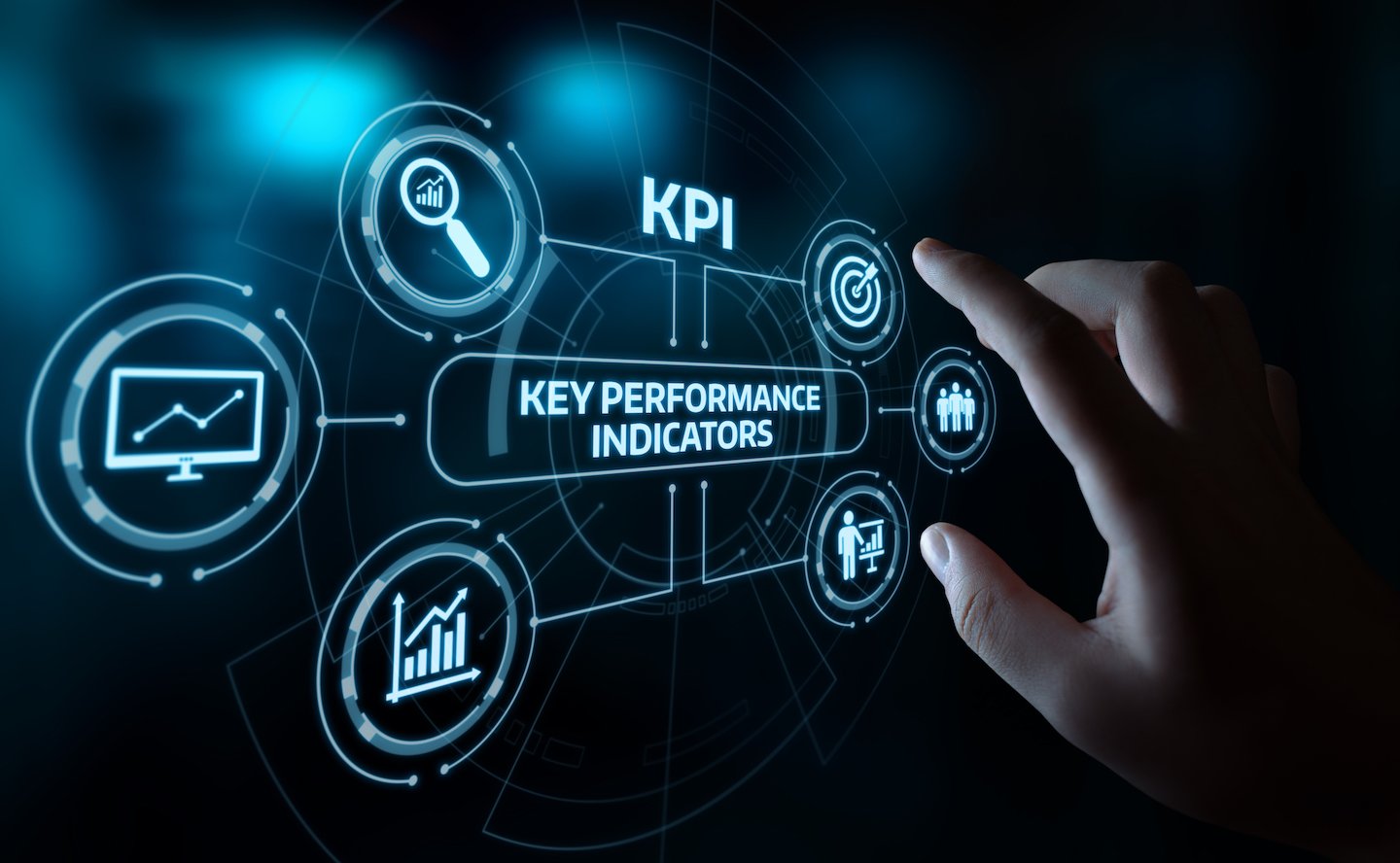
Blog
In procurement what gets measured gets done
By Simon Brown |
“What gets measured gets done, what gets measured and fed back gets done well, what gets rewarded gets repeated.”
The source for this quotation is open to debate, but the principle is that people will do things that they are measured on and will work even harder to deliver on them if they are rewarded accordingly. To make this happen, you need to understand your organisation’s goals and then build your own team’s KPI measures to deliver against them. Once you have created your high-level KPIs, then these can be underpinned by more specific performance-based metrics.
When considering this from a Procurement perspective, there are a few fundamental considerations that should inform how you go about developing a suitable selection of Procurement KPI metrics. These include:
1. Organisations with joint procurement objectives and accountability typically have much better cross-functional working, deliver better financial results and are more satisfied with their metrics.
2. Procurement needs to position its metrics to appeal to the business unit or customer and explain how they are helping them, e.g., reducing our supply market risk by finding new suppliers etc.
3. Procurement metrics should also be created in a cross-functional way based on objectives and key requirements of the relevant stakeholder group within the business. They should reflect the needs of their stakeholders, e.g. cost reduction, increased sales, products delivered faster to market, speed to get a new business acquisition up and running etc.
Typical Procurement metrics
There are various high-level procurement KPIs that organisations typically use to measure procurement performance, such as:
• % price or cost savings
• % of spend competitively bid each year
• number of eAuctions run per annum
• number of eAuctions run per annum
• % of spend covered by POs etc
• average cycle time of requisition to order
• % on-time deliveries
• % of spend with ‘sustainable’ suppliers
Risk metrics
Risk is arguably one of the most critical aspects that Procurement teams have to manage, and yet it is one of the more complex things to measure. This is because you often cannot measure it until a breach or disaster occurs. Even here, there are still some risk metrics that are worthy of consideration, such as:
• % of spend with alternative sources of supply
• % of suppliers with a good financial audit
Category management metrics
When measuring the contribution of Procurement beyond savings, we need to establish the key metrics for our strategic procurement activity, such as category management. There are many different metrics, and below is a summary of the key ones:
Spend
• spend per category manager
• % spend covered by approved category strategy
• % spend re-sourced to new suppliers
Savings
• cost reduction per category spend per category manager
• total Procurement ROI – total benefits delivered / cost of Procurement Dept
• cashflow contribution – reduced inventory or improved payment terms
Suppliers
• spend with single-source suppliers
• no. of suppliers per category
• no of new suppliers per category per annum
Strategies
• no. of category strategies completed in 12 months
• no of value levers identified per strategy – before & after
• no. of strategies that have joint accountability for delivery
The above list of metrics are examples, and there are many more that can be considered. The main point is that once you identify your critical KPIs and start to measure them, they are visible to the team, which should drive the right behaviours and focus of attention.
How to assure savings delivery
In the present economic climate, organisations focus on their ability to drive savings from their spend and supply base. Hence building and implementing a full pipeline of category projects is essential to ensuring a solid financial delivery.
How do we best ensure that this pipeline of projects delivers against their objectives in a timely fashion? Here are the most important factors:
1. Wave Planning: Set up a spreadsheet covering all category projects you are working on with the key information such as annual spend, savings targets, sponsor, category lead, time to complete etc. This approach helps to measure and communicate progress made in each project.
2. Governance: Set up a formalised governance process to review the category projects against key milestones and decision gates. This process should include senior business stakeholders, sponsors and Procurement to ensure a cross-functional approach is adopted.
3. Reporting: Agree on a consistent approach to reporting the progress of the projects – this must include an agreed way of measuring savings or value add that the Finance team validates.
4. A baseline for each project should be agreed from which savings can be calculated and reported. Savings must be agreed and signed off by the project sponsor and finance and reflected in business budgets.
5. Project Reviews: The review meetings provide an opportunity for each category project team to present its progress to date against the agreed milestones. The steering team provides constructive feedback, challenges the teams, and offers advice and information to enable the team to move forward positively to the next stage of the project. They should also have the authority to close down projects that are not delivering against the objectives.
6. Project Closure: The team should Review projects at their conclusion by having a short project review & closure meeting to reflect on the learnings from the project and celebrate success.
In summary, identifying and measuring the most suitable KPIs for your Procurement operation is a critical aspect of driving a change in approach and behaviour and getting things done. Make them logical, transparently linked to your organisation’s success, simple to measure and easy to understand, and you won’t go far wrong.
Further reading
Blog post: Benchmarking your category management performance

About Simon Brown
Director
30 years procurement experience in line management and
consulting roles.
Previous employment: British Aerospace, British Airways, QP Group
Education: MBA, London Business School. BA (Hons) Business Studies.
CIPS: member
Further Reading

Blog
Procurement Supplier Management
By Mark Hubbard |
Procurement Supplier Management has been a challenging area to deal with for a whole series of reasons – it is worth having a close look at some of the issues and opportunities surrounding the subject area.
Which sectors focus on Procurement Supplier Management?
As a starting point, it is worth reflecting that, in general, procurement supplier management SRM, gets far less attention within organisations than it deserves. This isn’t true everywhere; some sectors put considerable effort into supplier management and lean heavily on their suppliers to maximise the value they can achieve from their whole supply chain. The leaders in this space are, arguably, the automotive sector. They have been working this way for tens of years; this entire approach is likely to be second nature to those businesses.
Addressing procurement supplier management is thought of as only something for the automotive sector because there is something about the automotive supply chain that makes it possible. Having worked in that space, I would suggest that this is not a correct assumption. The carmakers put a vast amount of effort into this space and get the returns from it that make it worthwhile. Most other sectors have no real visibility of the depth of effort made to get to that advantage, so they often choose to do little or nothing.
The Supplier Meeting.
A second point here is recognising that many of the standard approaches to supplier management seem to have ‘the supplier meeting’ as the peak of the possible activity between two organisations. As ever, excellent communications help, but a quarterly meeting is unlikely to be the huge delivery mechanism for the value that some appear to believe it is.
Instead, and as with category management, a structured approach that identifies the best way for two organisations to create value together is where we should focus our attention. It needs creativity and thought at the front end and ruthless management of delivery projects at the back end to make sure that the desired value is both evident and realised.
How do we get to some of this magical value? We need to recognise that not all suppliers are equal and we have a finite amount of resource available.
Focus on which suppliers to engage with.
We need to focus on which suppliers we need to engage with and keep this under regular review. Having a mechanism that allows you to review the key suppliers to spend resource on is critical to the whole process. Without it, time can be spent on futile programs that deliver nothing.
We also need to know why we want to engage with suppliers by focusing on our own organisation’s strategic intent and ensuring that we are working most closely with the suppliers who deliver in alignment with that direction. Remember, this may not be the one we spend the most money with
There’s another essential element here; the supplier must be willing to join in with the supplier relationship management activity. If they are not interested or perceive that there is no benefit for them, they are less likely to be willing. As such, we may need to do some up-front work to establish both what we need to get out of the approach and spend time understanding what they get out of it.
What does good performance look like in Procurement Supplier Management?
Another element that often proves troublesome is knowledge; what does good performance look like for SRM, and can we measure that effectively? Programs often fall apart because there is no way to look at performance in any meaningful way, in any areas that matter.
However, we need to consider the available upside if we manage to get through all of the perceived barriers. Working effectively with suppliers can deliver whole percentage points of improvement in various areas, and the best programs offer far more.
Better flexibility, resource management, access to innovation, supply chain robustness, ideas, support, training, quality of service and more are examples found in the past. When done well, deliver value in the range of multiples of the program needed to access the value.
Unfortunately, the hard evidence that defines these outcomes is often difficult to come by. We see enough to suggest that well-managed programs deliver excellent results, and poorly designed and implemented programs do not.
Many businesses spend around half their sales dollars with suppliers. Managing the value created from that supply chain for maximum potential seems to be a good way of creating more success for our businesses.
Getting great at Supplier Management is a worthwhile investment.

About Mark Hubbard
Director
30+ years experience in procurement and supplier management, in line and consulting roles
Previous employment: Positive Purchasing Ltd, SITA,
QP Group, BMW, SWWS, Rover
Education: BSc in Engineering Metallurgy, MBA University of Plymouth
CIPS: Member




